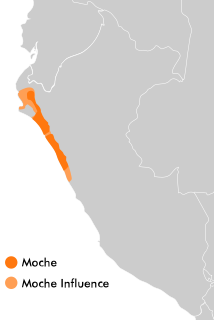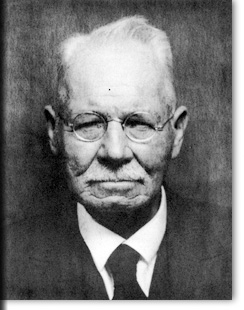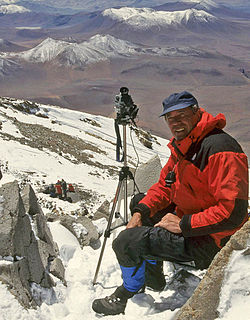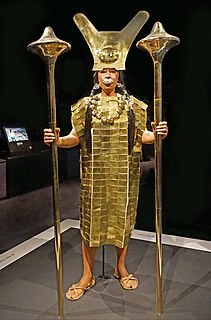
The Moche civilization flourished in northern Peru with its capital near present-day Moche, Trujillo, Peru from about 100 to 700 AD during the Regional Development Epoch. While this issue is the subject of some debate, many scholars contend that the Moche were not politically organized as a monolithic empire or state. Rather, they were likely a group of autonomous polities that shared a common culture, as seen in the rich iconography and monumental architecture that survives today.

Trujillo is a city in coastal northwestern Peru and the capital of the Department of La Libertad. It is the third most populous city and center of the third most populous metropolitan area of Peru. It is located on the banks of the Moche River, near its mouth at the Pacific Ocean, in the Moche Valley. This was a site of the great prehistoric Moche and Chimu cultures before the Inca conquest and subsequent expansion.

Momia Juanita, also known as the Lady of Ampato, is the well-preserved frozen body of an Inca girl who was killed as an offering to the Inca gods sometime between 1450 and 1480 when she was approximately 12–15 years old. She was discovered on Mount Ampato in southern Peru in 1995 by anthropologist Johan Reinhard and his Peruvian climbing partner, Miguel Zárate. "Juanita" has been on display in the Catholic University of Santa María's Museum of Andean Sanctuaries in Arequipa, Peru, almost continuously since 1996, and was displayed on a tour of Japan in 1999.

Friedrich Max Uhle was a German archaeologist, whose work in Peru, Chile, Ecuador and Bolivia at the turn of the Twentieth Century had a significant impact on the practice of archaeology of South America.

Huaca de la Luna is a large adobe brick structure built mainly by the Moche people of northern Peru. Along with the Huaca del Sol, the Huaca de la Luna is part of Huacas de Moche, which is the remains of an ancient Moche capital city called Cerro Blanco, by the volcanic peak of the same name.

Johan Reinhard, is an Explorer-in-Residence at the National Geographic Society. He is also a senior research fellow at The Mountain Institute, West Virginia, a visiting professor at Catholic University, Salta, Argentina, and an honorary professor of Catholic University, Arequipa, Peru.

Located in the Chicama Valley, the El Brujo Archaeological Complex, just north of Trujillo, La Libertad Province, Peru, is an ancient archaeological site that was occupied from preceramic times. Considering the broad cultural sequencing, the Chicama Valley can be considered as an archaeological microcosm. The research benefits from the favourable environmental and topological conditions for material conservation.
Alana Kathleen Cordy-Collins was Professor of Anthropology at the University of San Diego. She was an archaeologist whose primary specialization was Peruvian prehistory.

Izumi Shimada (島田泉) is a Distinguished Professor of Anthropology at Southern Illinois University, Carbondale (SIUC) and 2007 Outstanding Scholar with research interests in the archaeology of complex pre-Hispanic cultures in the Andes, the technology and organization of craft production, mortuary analysis, experimental archaeology, the role of ideology and organized religion in cultural developments, and ecology-culture interaction.
John M. Fahey is chairman emeritus of the National Geographic Society. He was chief executive officer of the National Geographic Society from March 1998 to December 2013 and president of the organization from March 1998 to December 2010.

The Cerro Pátapo ruins or Northern Wari ruins are the remains of an entire prehistoric city relatively near the site of present-day Chiclayo, Peru. The ruins are primarily of the Wari (Huari) culture, which flourished from 350 CE to 1000 CE in the area along the coast and reaching to the highlands. These northern Wari ruins are distinguished from the Wari ruins in the Ayacucho Region to the south.
Michael Edward Moseley is an American anthropologist at the University of Florida.
The Children of Llullaillaco, also known as the Mummies of Llullaillaco, are three Inca child mummies discovered on 16 March 1999 by Johan Reinhard and his archaeological team near the summit of Llullaillaco, a 6,739 metres (22,110 ft) stratovolcano in the Andes mountains on the border between Chile and Argentina. The children were sacrifices in an Inca religious ritual that is believed to have taken place c. 1500. In this ritual, the three children were drugged and allowed to freeze on top of the mountain, and then they were placed inside a small chamber 1.5 metres (4.9 ft) beneath the ground, where they were left to die. According to Reinhard, the mummies "appear to be the best preserved Inca mummies ever found", and other archaeologists have expressed the same opinion, calling them among the best preserved mummies in the world.
Walter Alva, full name is Walter Alva Alva, is a Peruvian archaeologist, specializing in the study and excavation of the prehistoric Moche culture. Alva is noted for two major finds: the tomb of the Lord of Sipan and related people in 1987, and 2007.
The Andean civilizations were a patchwork of different cultures and peoples that mainly developed in the coastal deserts of Peru. They stretched from the Andes of Colombia southward down the Andes to northern Argentina and Chile. Archaeologists believe that Andean civilizations first developed on the narrow coastal plain of the Pacific Ocean. The Norte Chico civilization of Peru is the oldest civilization in the Americas, dating back to 3200 BCE.
Christopher B. Donnan is an archaeologist. He has researched the Moche civilization of ancient Peru for more than fifty years, conducting numerous excavations of Peruvian archaeological sites. Donnan has traveled the world photographing Moche artwork for purposes of publication, recording both museum artifacts and private collections that would otherwise be unavailable to the public. He has published extensively, both academically and for the general public.
Inca Mummies: Secrets of a Lost World is a 2002 documentary that explores the Inca civilization.

The Lady of Cao is a name given to a female Moche mummy discovered at the archeological site El Brujo, which is located about 45 km north of Trujillo in the La Libertad Region of Peru.
María Constanza Ceruti is an Argentinian high-altitude archaeologist and anthropologist who has done more than 80 field surveys, most of them with National Geographic teams in Argentina, Chile, Bolivia, Ecuador and Peru. She specializes in excavating Inca Empire ceremonial centers on the summits of Andean mountains. Her most important finding are the Llullaillaco Mummies, the best preserved mummies in the world according to the Guinness Book of Records. She's the only archaeologist specialized in the field of High Mountains. She's also a researcher in the CONICET, director of the Institute of High Mountain Research at the Catholic University of Salta and teacher of a class that bears her name: Sacred Mountains - Constanza Ceruti.
The Middle American Research Institute was established at Tulane University in 1924.












